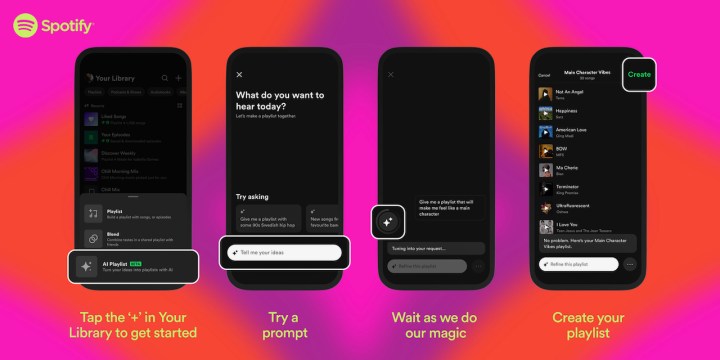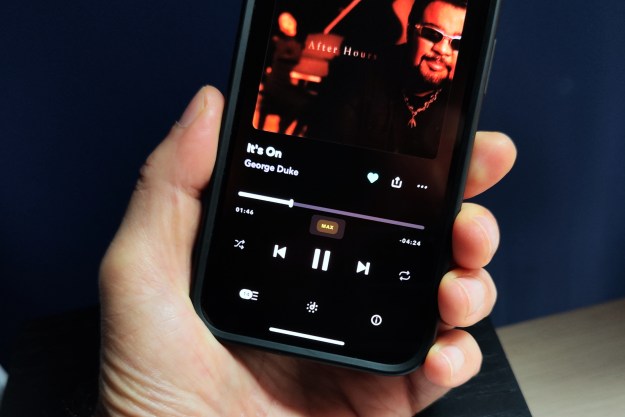
Spotify already has one of the best music discovery and playlist creation UIs in the biz, so where does the world’s biggest music streaming service have left to go? Why, AI text prompts, of course. That’s right, Spotify has announced that it is beta testing a new AI Playlist feature that will allow users to use text descriptions to curate playlists.
Available to Spotify Premium users in Australia and the U.K (for now) on Android and iOS devices, the AI Playlist feature can be found in the app’s “Your Library” section, where you’ll be able to tap the “+” icon to find the new AI Playlist (beta) menu. Here, you can select one of the premade suggested prompts or you can get creative and type in your own.

Some of the examples given in a Spotify press release about the new feature include “an indie folk playlist to give my brain a big warm hug,” “relaxing music to tide me over during allergy season,” and “a playlist that makes me feel like the main character”?
Spotify will then curate a playlist of 30 songs based on your prompt, but you can also go further and adjust the results with additional prompts, like “more hip-hop” or “less gloomy” or even “no Taylor Swift.” Tapping “Create” generates the new playlist and saves it to your library.
Spotify did caution that the feature is brand new and offered these tips: Places, animals, activities, movie characters, colors — and even emojis — are all fair game when it comes to making prompts. However, the feature is in beta mode, so Spotify is still actively learning and iterating with each exchange. At launch, the most successful playlists are generated through “genre,” “mood,” or “artist” prompts.
There’s no word from Spotify on when the AI Playlist might be available to U.S. users, but the feature already feels like it will be more useful than last year’s AI DJ that used its same algorithm to generate playlists based on your tastes, but paired it with an AI-generated DJ voice.
Editors' Recommendations
- Spotify adds music videos for Premium users in a handful of countries
- How much is Spotify Premium, and can you get it for free?
- Spotify shows how in-app purchases will work in Europe come March
- What is Deezer? Features, pricing, and music quality explained
- SiriusXM reboots satellite radio with new app, features — and price




